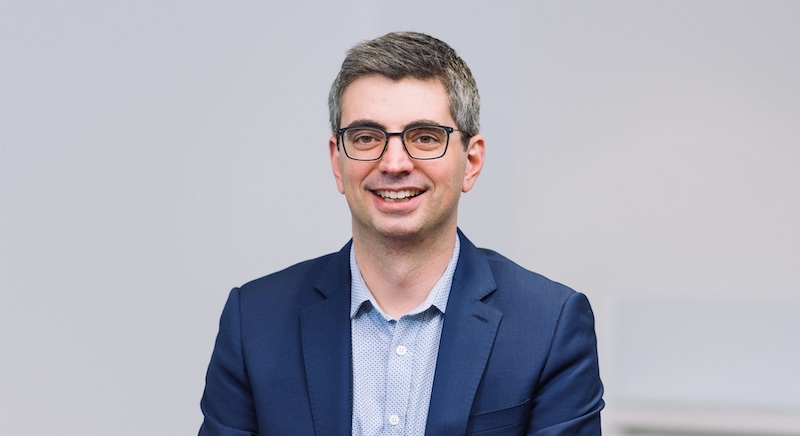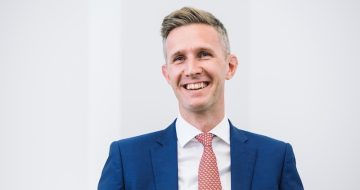Legal Cheek Careers sits down with Bristows partner Gregory Bacon

“I studied neuroscience at uni and really had no idea that I’d want to be a lawyer at the end of that,” admits Gregory Bacon, partner at Bristows. His path into law was anything but straightforward. After completing a PhD and spending two years in postdoctoral research, he found himself drifting away from laboratory life. As he puts it, he had “fallen out of love with lab-based research” and was ready for a new challenge.
What appealed most to Bacon was the chance to apply scientific knowledge beyond academia. “I was most interested in the translation of science to commerce and something that involved understanding what was going on in science, and then working in that field once that was converted to commercial technology,” he recalls. The opportunity to make scientific expertise useful in the real world proved irresistible. He soon realised he was drawn to the business and legal side of innovation. “I thought what I’d really like to do was advise companies around their technologies,” he recalls. “That made me think the legal side of intellectual property would be the most interesting area to explore.”
When he decided to pursue law, Bacon knew he wanted to join a firm with a strong IP practice. “A lot of people want to become a lawyer because they want to do IP, rather than because they want to be a lawyer. That was very true for me,” he tells Legal Cheek Careers. Bristows, with its strong reputation for all things IP, was high on his list. “I joined as a trainee, and I have been here ever since, which is 20 years this year,” he notes with a smile. “So, they’re doing something right!”
With a science PhD under his belt, Bacon found himself gravitating naturally towards patent litigation. The technical complexity of cases makes the area a natural fit for STEM graduates. “I wanted to work for companies that had a lot of technology around their products or their services,” he says. And advising those companies requires much more than legal training. “Particularly in patent litigation, the dispute is all about the underlying technology.” That constant exposure to innovation is what excites him most. “If someone gave me a case like coding or electronics, even though I studied life sciences, I’d think, ‘this is fascinating — I would love to learn about this. I’m going to learn about it so that I can advise the client at the level of detail they need’.” For Bacon, this mindset explains why STEM graduates thrive in IP law. “IP reflects the STEM work these companies are doing.”
While IP may be the obvious route for STEM students, Bacon is keen to point out that scientific expertise is valuable across many legal practice areas. “Prospective lawyers from a STEM background should think more broadly,” he advises. He highlights data protection and technology regulation, which often require lawyers to understand the algorithms, platforms, and infrastructure “behind the scenes”. Life sciences is another example. “If you’re selling medicines, the regulatory framework is far more detailed than most other products, and to advise effectively you need to understand how the drug actually works — the composition of the medicine, how it is made, how it functions in the body, and which disease it targets. For Bacon, the key is not to pigeonhole oneself too early. “Tech-rich companies really need specialist advice across the board, so I would say look at IP, data protection, regulatory, specialist contract (e.g. IT and IP licensing) work. I’d hate STEM students not to realise there is this whole other area of law where you are still working for technology-rich companies, and really using your STEM background.”
So what does a career in patent litigation actually look like? According to Bacon, the variety is immense. “From case to case, clients bring me new technical issues. One might have a patent for a new product or process, while another involves a newly discovered disease, a new drug, or a novel mechanism of action,” he explains. “That’s what I love, because I am basically learning something new every day, both in the law and the technologies. I’m continuing this journey of learning about things that I was doing as a STEM student and researcher, even though the focus is now on the law. It kind of feels like it’s an extension of that.”
Day-to-day work varies depending on the stage of a case. Early on, Bacon might advise a client on their IP rights or assess potential competitor threats. Once litigation begins, the pace accelerates. Preparing for trial involves building arguments and gathering expert evidence. “We work with independent technical experts — an engineer, doctor, scientist, sometimes a mathematician or statistician — to prepare and present a report to the court that explains the technology,” he says. “I spend a lot of time with people still working in STEM, asking questions and getting them to explain the details… so I work very closely with experts.”
Patent litigation in England has a distinctive structure. While barristers handle advocacy in court, solicitors are responsible for preparing the case and managing the overall strategy. This means Bacon works closely not only with clients and technical experts but also with barristers. “There’s quite an interesting dynamic. You’re not just working with the lawyers in your team, or the experts, or the client; you’ve also got to work with the barristers. So personality and teamwork are important,” he says. The role requires strong organisation and the ability to coordinate many moving parts — in-house business-people and lawyers, external solicitors in your own team or other firms where you’re working together, barristers, and technical experts — all pulling together towards a common goal.
Patent disputes are rarely confined to a single jurisdiction. “Most of my work nowadays does not just involve a dispute in the UK,” Bacon says. “The same product or the same service will be sold in 10, 15, 20, even 50 markets or more around the world. If two companies are having a major dispute over their IP, there will usually be parallel disputes in other countries too.” Managing this complexity often falls to his team. “Often we have a dual role,” he continues. “We are conducting the UK litigation and at the same time managing litigation across the world for the client. We act as their strategic legal advisors.”
Although Bristows operates from a single London office, the firm frequently acts as a hub for international disputes, ensuring strategy is aligned across Europe, the US, Asia, and beyond. “It is very international,” Bacon adds, noting that this trend is no longer limited to patents but extends into areas such as data protection and competition law.
After two decades in practice, Bacon has clear advice for students considering law. First, understand the role of a lawyer. “You are a business advisor, not the business itself. You are helping the business make the best decisions it can by advising on what the law is, or what the law might be. It is a very powerful role, very important, but it is advisory.” Those who want to run a business themselves may find law frustratingly indirect. “If that is your attitude, do not be a lawyer, because lawyers are generally advisors, not businessmen or women,” he warns. Although that can change if you become a partner in a law firm where you may have a dual role as owner and manager of the business as well as an advisor to clients.
Second, recognise that legal work has much in common with research. “At the end of the day, what lawyers need to be able to do is synthesise legal argument by reviewing material, analysing legal sources, developing the solutions and then presenting that advice clearly, succinctly, and persuasively.” Finally, Bacon emphasises the level of commitment involved. Qualifying demands significant time and resources. “It is quite a big commitment to re-qualify into law — a lot of time, a lot of money — and if, in truth, you don’t feel committed, then it may not be the right path.”
For Bacon, the journey from neuroscience to law has been immensely rewarding. It allows him to continue learning about new technologies, tackle complex problems, and advise cutting-edge companies while drawing on his scientific background. “It really can be a great career,” he reflects. “Focus on whether the nature of the job long-term aligns with your interests. If it does, then you should seriously think about pursuing it.”
Gregory Bacon will be speaking at ‘STEM Focus: Life as an intellectual property lawyer — with Bristows’, a virtual student event taking place on 14 October. Apply to attend.
About Legal Cheek Careers posts.


